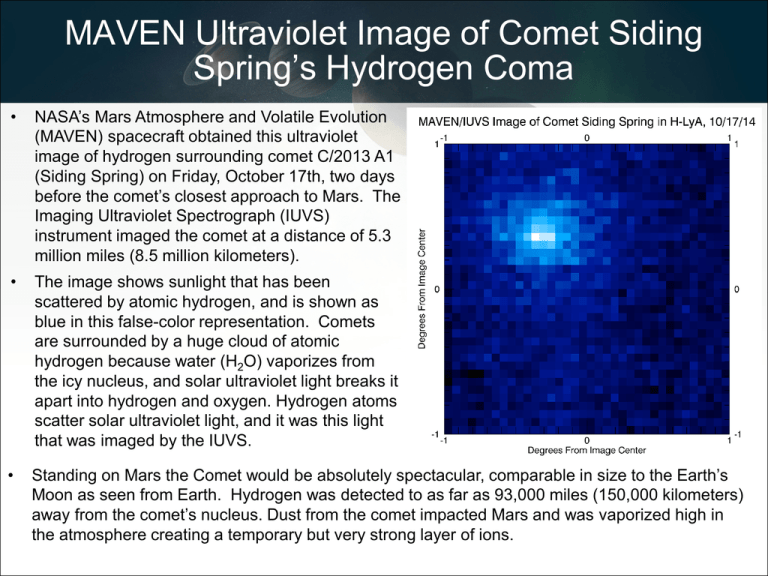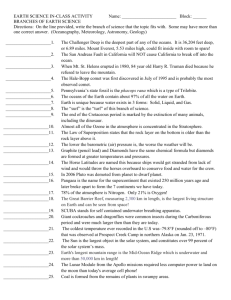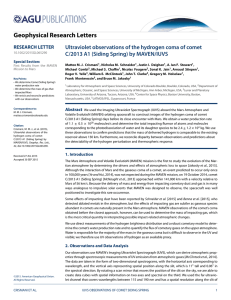MAVEN Ultraviolet Image of Comet Siding Spring’s Hydrogen Coma
advertisement

MAVEN Ultraviolet Image of Comet Siding Spring’s Hydrogen Coma • NASA’s Mars Atmosphere and Volatile Evolution (MAVEN) spacecraft obtained this ultraviolet image of hydrogen surrounding comet C/2013 A1 (Siding Spring) on Friday, October 17th, two days before the comet’s closest approach to Mars. The Imaging Ultraviolet Spectrograph (IUVS) instrument imaged the comet at a distance of 5.3 million miles (8.5 million kilometers). • The image shows sunlight that has been scattered by atomic hydrogen, and is shown as blue in this false-color representation. Comets are surrounded by a huge cloud of atomic hydrogen because water (H2O) vaporizes from the icy nucleus, and solar ultraviolet light breaks it apart into hydrogen and oxygen. Hydrogen atoms scatter solar ultraviolet light, and it was this light that was imaged by the IUVS. • Standing on Mars the Comet would be absolutely spectacular, comparable in size to the Earth’s Moon as seen from Earth. Hydrogen was detected to as far as 93,000 miles (150,000 kilometers) away from the comet’s nucleus. Dust from the comet impacted Mars and was vaporized high in the atmosphere creating a temporary but very strong layer of ions.




